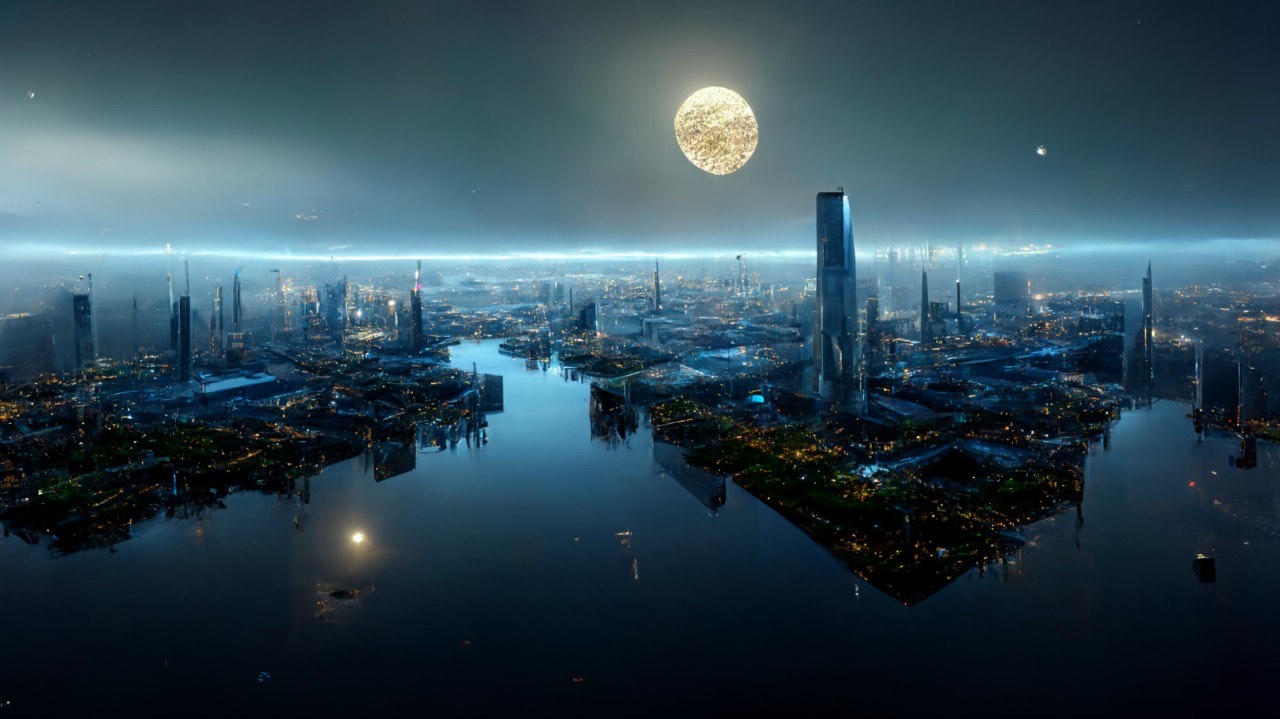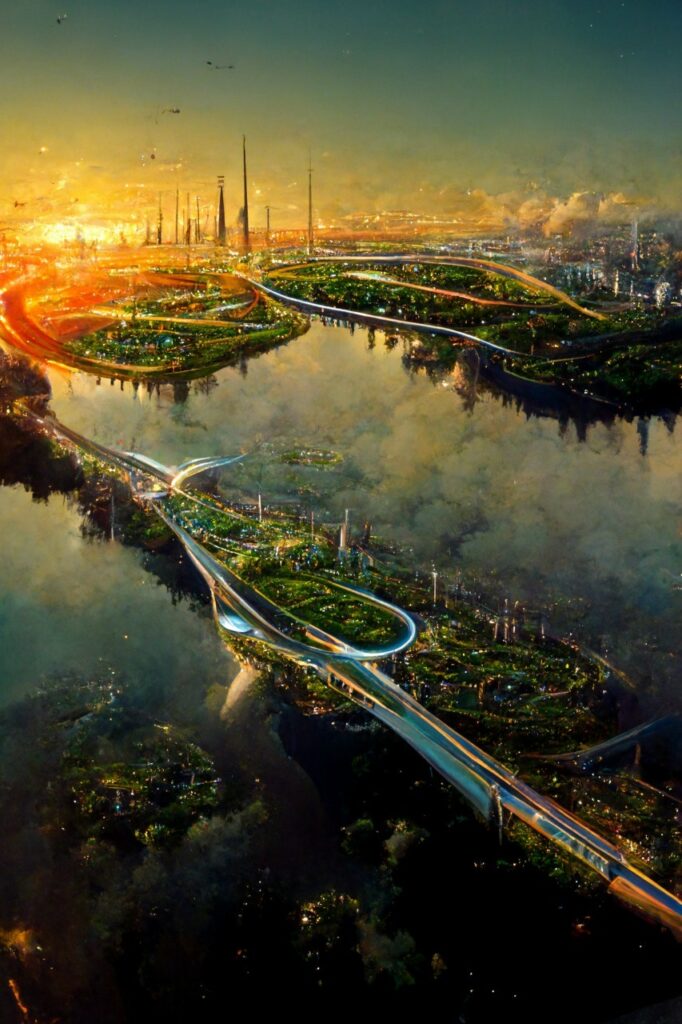FUTURE CITIES
In the year 1800 only 4% of the world’s population lived in urban areas, by 1900 this had increased to 15%. Just over a Century later, in 2008 half of the people on earth had become urbanites and this is expected to continuously grow, with the World Economic Forum predicting that by the year 2050, just one generation from now, two-thirds of the global population will live in large cities.
Today, cities across the world occupy just 3% of the earth’s landmass but contain buildings and infrastructure that is responsible for 78% of the annual, global Greenhouse Gas (GHG) emissions, and much of the world’s energy consumption.
The United Nations estimate that by the year 2050, the world’s population will grow by an additional 2.4 billion people, with most of this growth densifying and expanding urban areas. It is expected that this rapid urbanisation will require an additional 230 billion square metres of additional building footprint to be created, equal to the existing extent of the entire current global building stock, along with the infrastructure needed to connect and support this.
Such growth will exacerbate the need for energy consumption, and unless we act now to alter the way in which we design and build our new buildings and cities will in turn further exacerbate GHG emissions. Failure to better manage this rapid urbanisation will bring profound instability, vulnerability and risks to our already susceptible populations, urban areas, and the natural environment.
As creators of future cities, those of us with the responsibility to deliver, manage and maintain this growth must engage with a multitude of complex challenges, and work to ensure that as our cities old and new, evolve as they maximise the use of smart technologies to build-in resilience that addresses growing demands, expectations, and limited resources to expand sustainably, economically, socially, and environmentally.
We must all work towards realising Goal 11 of the United Nations’ Sustainable Development Goals (SDGs), which calls for ‘making cities and human settlements inclusive, safe, resilient and sustainable’. Most of the 17 SDG goals and targets are directly relevant to urban decision-makers as cities typically offer a good starting point for implementing most SDGs, as it is at the local scale where inequity and dysfunctionality first become apparent. Also, the range and complexity of interdependencies between the various SDGs, including synergies and trade-offs, are greatest in cities.

SMART CITIES
A smart city is a place where traditional networks and services are made more efficient with the use of digital solutions for the benefit of its inhabitants and business.
A smart city goes beyond the use of digital technologies for better resource use and less emissions. It means smarter urban transport networks, upgraded water supply and waste disposal facilities and more efficient ways to light and heat / cool buildings. It also means a more interactive and responsive city administration, safer public spaces and meeting the needs of an ever more diverse population.
There is a need for increased data collection, much wider scientific deliberation about metrics that are available or chosen as indicators for sustainable development and the data collected on the basis of these choices, and a better capacity for spatial and statistical disaggregation of urban data. Modelling serves as a vehicle to facilitate informed conversation, and thus shared understanding of a problem and potential solutions; dynamic modelling and simulation is a valuable tool that provides insight into systems functioning, and the identification of the most worthwhile policy options.
To achieve sustainability and resilience, urban planning needs to incorporate a large, nested hierarchy of spatial scales, taking into account the external connections and impacts of cities. Collaboration across a global system of cities could and should provide a new component of a governance framework to manage resource chains for
sustainability and resilience. In this way, planners and policy makers can create a more inclusive process to determine which potential pathways will offer the most desirable sustainability and/or resilience outcomes.

There are five smart city principles – digital transformation, urban environment, mobility, governance and finance, and inclusivity.
Digital transformation in today’s smart cities use sensors to collect and interpret data to make our city’s more liveable and advance our daily lives. Sensor networks exist throughout cities which collect data that monitors usages and patterns. Smart City is a concept that uses technology to improve governance, planning, management, and liveability of a city by gathering real-world, real-time data. This data can be utilised to effect change by running test scenarios to model and determine future responses or can be used in real time to make immediate changes built on established pre-modelled processes and protocols. The model used to test, predict, and analyse the effects of this incoming data is known as a digital twin. It allows us to simulate and animate our physical environment’s technical and social performance based on the effects of real-time data. It enables us to analyse how our environment performs in daily operations and what are the short-term or long-term implications of that performance.
Smart cities are constructed by connecting the city’s public infrastructure with city application systems and passing collected data through three layers, the perception layer, the network layer and the application layer. City application systems then use data to make better decisions when controlling different city infrastructures.
At tangramMETA we use BIM modelling systems as an holistic process of creating and managing information for a built asset based on an intelligent model that integrates structured multidisciplinary data from the planning and design stages to construction, facility management and operation stages. This has the potential to extrapolate future, upcoming scenarios, and feed back into the model the impacts that these may have to establish the digitally simulated future state of the model, product or system that is replicated.
